Publicações de Erika Nascimento Lima
Almeida, L.; Pereira, Teldo A. S.; Lima, Erika Nascimento Propriedades eletrônicas e topológicas do antimoneno sob efeito de tensão: uma abordagem por cálculos de primeiros princípios Journal Article Em: JMFis, vol. 07, não 02, pp. 27–32, 2024, ISSN: 2965-1964. Resumo | Links | BibTeX | Tags: Kegler, Vanessa D.; Oliveira, Igor S. S.; Pacine, Dominike; Nunes, Ricardo W.; Pereira, Teldo A. S.; Lima, Erika Nascimento Group-IV Pentaoctite: A New 2D Material Family Miscellaneous 2024. Resumo | Links | BibTeX | Tags: Barboza, Elisangela Silva; Cruz, Kessia L. M.; Ferreira, Ramon S.; Dias, Alexandre C.; Lima, Erika Nascimento; Costa, Diego R.; Pereira, Teldo A. S. Stability and Optoelectronic Properties of Two-Dimensional Gallium Phosphide Journal Article Em: ACS Omega, vol. 0, não 0, pp. null, 2024. Resumo | Links | BibTeX | Tags: Cunha, Rafael O.; Garcia-Basabe, Yunier; Larrude, Dunieskys G.; Gamino, Matheus; Lima, Erika Nascimento; de Lima, F. Crasto; Fazzio, Adalberto; Rezende, Sergio M.; Azevedo, Antonio; Mendes, Joaquim B. S. 2024. Resumo | Links | BibTeX | Tags: Oliveira, I. S. S.; Lima, Erika Nascimento; Miwa, Roberto H.; Deus, Dominike P. Andrade Unveiling the electronic properties of BiP3 triphosphide from bulk to graphene-based heterostructures by first-principles calculations Journal Article Em: Applied Surface Science, pp. 160041, 2024, ISSN: 0169-4332. Resumo | Links | BibTeX | Tags: 2D material, First-principles calculations, Graphene interface, Layered materials, Schottky barrier, Triphosphide Florindo, Bianca Rocha; Hasimoto, Leonardo H.; Freitas, Nicolli; Candiotto, Graziâni; Lima, Erika Nascimento; Lourenço, Cláudia; Araujo, Ana B. S.; Ospina, Carlos; Bettini, Jefferson; Leite, Edson R.; Lima, Renato S.; Fazzio, Adalberto; Capaz, Rodrigo B.; Santhiago, Murilo 2023, ISSN: 2050-7496. Resumo | Links | BibTeX | Tags: Deus, Dominike P. Andrade; Oliveira, Igor S. S.; Miwa, Roberto H.; Lima, Erika Nascimento Unveiling the electronic properties of BiP$_3$ triphosphide from bulk to graphene-based heterostructure by first-principles calculations Journal Article Em: 2023. Resumo | Links | BibTeX | Tags: Florindo, Bianca Rocha; Hasimoto, Leonardo Hideki; Freitas, Nicolli; Candiotto, Graziâni; Lima, Erika Nascimento; Lourenço, Cláudia; Araujo, Ana Beatriz Sorana; Ospina, Carlos; Bettini, Jefferson; Leite, Edson Roberto; Lima, Renato S; Fazzio, Adalberto; Capaz, Rodrigo B.; Santhiago, Murilo Patterning edge-like defects and tuning defective areas on the basal plane of ultra-large MoS2 monolayers toward hydrogen evolution reaction Journal Article Em: J. Mater. Chem. A, pp. -, 2023. Resumo | Links | BibTeX | Tags: 2024
@article{Almeida2024,
title = {Propriedades eletrônicas e topológicas do antimoneno sob efeito de tensão: uma abordagem por cálculos de primeiros princípios},
author = {L. Almeida and Teldo A. S. Pereira and Erika Nascimento Lima},
doi = {10.59396/29651964jmfis.7-2.27.2024},
issn = {2965-1964},
year = {2024},
date = {2024-12-09},
urldate = {2024-00-00},
journal = {JMFis},
volume = {07},
number = {02},
pages = {27--32},
publisher = {Programa de Pós-Graduação em Física, Universidade Federal de Mato Grosso},
abstract = {Neste estudo, utilizamos cálculos baseados na teoria do funcional da densidade (DFT) para investigar as propriedades eletrônicas do antimoneno sob tração biaxial. Observamos que uma tensão de 2% induz uma transição de gap indireto para direto, que persiste até o fechamento do gap em 11%. Acima desse valor, o material volta a exibir gap indireto e passa a se comportar como um isolante topológico, confirmado pelo invariante Z2=1. Esses resultados demonstram a versatilidade do antimoneno e seu potencial para aplicações em nanoeletrônica e spintrônica.},
keywords = {},
pubstate = {published},
tppubtype = {article}
}
@misc{kegler2024groupivpentaoctitenew2d,
title = {Group-IV Pentaoctite: A New 2D Material Family},
author = {Vanessa D. Kegler and Igor S. S. Oliveira and Dominike Pacine and Ricardo W. Nunes and Teldo A. S. Pereira and Erika Nascimento Lima},
url = {https://arxiv.org/abs/2409.05986},
year = {2024},
date = {2024-09-11},
urldate = {2024-01-01},
abstract = {This study investigates the structural, mechanical, and electronic properties of novel two-dimensional (2D) pentaoctite (PO) monolayers composed of group-IV elements (PO-C, PO-Si, PO-Ge, and PO-Sn) using first-principles calculations. Stability is explored through phonon spectra and ab initio molecular dynamics simulations, confirming that all proposed structures are dynamically and thermally stable. Mechanical analysis shows that PO-C monolayers exhibit exceptional rigidity, while the others demonstrate greater flexibility, making them suitable for applications in foldable materials. The electronic properties show semimetallic behavior for PO-C and metallic behavior for PO-Si, while PO-Ge and PO-Sn possess narrow band gaps, positioning them as promising candidates for semiconductor applications. Additionally, PO-C exhibits potential as an efficient catalyst for the hydrogen evolution reaction (HER), with strain engineering further enhancing its catalytic performance. These findings suggest a wide range of technological applications, from nanoelectronics and nanomechanics to metal-free catalysis in sustainable energy production.},
keywords = {},
pubstate = {published},
tppubtype = {misc}
}
@article{doi:10.1021/acsomega.4c03861,
title = {Stability and Optoelectronic Properties of Two-Dimensional Gallium Phosphide},
author = {Elisangela Silva Barboza and Kessia L. M. Cruz and Ramon S. Ferreira and Alexandre C. Dias and Erika Nascimento Lima and Diego R. Costa and Teldo A. S. Pereira},
url = {https://doi.org/10.1021/acsomega.4c03861},
doi = {10.1021/acsomega.4c03861},
year = {2024},
date = {2024-08-08},
journal = {ACS Omega},
volume = {0},
number = {0},
pages = {null},
abstract = {Using first-principles calculations, density functional theory, and the tight-binding method, we investigate the optoelectronic properties of two-dimensional gallium phosphide (2D GaP). Our investigation covers electronic properties, such as band structure and electronic band gap, and optical properties, including absorption spectra, refractive index, and reflectivity, considering excitonic effects. Additionally, structural aspects such as stability, elastic properties, and Raman and infrared spectra are also analyzed. This comprehensive study brings up valuable insights into 2D GaP physics, evincing the key features that make it a potential material for optoelectronic applications, such as photodetectors and solar cells.},
keywords = {},
pubstate = {published},
tppubtype = {article}
}
@workingpaper{cunha2024unraveling,
title = {Unraveling the Spin-to-Charge Current Conversion Mechanism and Charge Transfer Dynamics at Interface of Graphene/WS$_2$ Heterostructures at Room Temperature},
author = {Rafael O. Cunha and Yunier Garcia-Basabe and Dunieskys G. Larrude and Matheus Gamino and Erika Nascimento Lima and F. Crasto de Lima and Adalberto Fazzio and Sergio M. Rezende and Antonio Azevedo and Joaquim B. S. Mendes},
url = {https://arxiv.org/abs/2405.18617},
year = {2024},
date = {2024-05-28},
urldate = {2024-01-01},
abstract = {We report experimental investigations of spin-to-charge current conversion and charge transfer dynamics (CT) at the interface of graphene/WS2 van der Waals heterostructure. Pure spin current was produced by the spin precession in the microwave-driven ferromagnetic resonance of a permalloy film (Py-Ni81Fe19) and injected into the graphene/WS2 heterostructure through the spin pumping process. The observed spin-to-charge current conversion in the heterostructure is attributed to inverse Rashba-Edelstein effect (IREE) at the graphene/WS2 interface. Interfacial CT dynamics in this heterostructure was investigated based on the framework of core-hole-clock (CHC) approach. The results obtained from spin pumping and CHC studies show that the spin-to-charge current conversion and charge transfer process are more efficient in the graphene/WS2 heterostructure compared to isolated WS2 and graphene films. The results show that the presence of WS2 flakes improves the current conversion efficiency. These experimental results are corroborated by density functional theory (DFT) calculations, which reveal (i) Rashba spin-orbit splitting of graphene orbitals and (ii) electronic coupling between graphene and WS2 orbitals. This study provides valuable insights for optimizing the design and performance of s},
keywords = {},
pubstate = {published},
tppubtype = {workingpaper}
}
@article{DEOLIVEIRA2024160041,
title = {Unveiling the electronic properties of BiP3 triphosphide from bulk to graphene-based heterostructures by first-principles calculations},
author = {I. S. S. Oliveira and Erika Nascimento Lima and Roberto H. Miwa and Dominike P. Andrade Deus},
url = {https://www.sciencedirect.com/science/article/pii/S0169433224007542},
doi = {https://doi.org/10.1016/j.apsusc.2024.160041},
issn = {0169-4332},
year = {2024},
date = {2024-04-10},
urldate = {2024-04-10},
journal = {Applied Surface Science},
pages = {160041},
abstract = {In our study, we conduct the structural and electronic properties of bismuth triphosphide (BiP3) in its bulk, few-layer, and monolayer forms. We found that BiP3 in bulk exhibits a metallic stable layered structure. The exfoliation energy of 1.07 J/m2 indicates ease exfoliation, comparable to other triphosphides. The band gap varies with thickness, transitioning from semiconductor—metal between four to five layers, influenced by interlayer coupling and quantum confinement. We also investigated the heterostructure created by depositing graphene (G) on few-layer BiP3. In monolayer (G/m-BiP3) and bilayer (G/2L-BiP3) forms, a metal–semiconductor junction is formed, characterized by weak vdW interactions at the interface and exhibiting p-type Schottky contacts. We observed that the Schottky Barrier Height (SBH) can be modulated by altering the interlayer distance between G and BiP3. This adjustment allows transitions between n-type and p-type Schottky contacts in G/m-BiP3 and the formation of an ohmic contact in G/2L-BiP3. Furthermore, applying an electric field affects the SBH, leading to similar transitions and the development of an ohmic contact. Additionally, our study shows that n-doping in graphene increases with the number of BiP3 layers and external electric field application. These properties position BiP3 few-layer as a promising material for nanoelectronic, optoelectronic, and graphene-based devices.},
keywords = {2D material, First-principles calculations, Graphene interface, Layered materials, Schottky barrier, Triphosphide},
pubstate = {published},
tppubtype = {article}
}
2023
@workingpaper{Florindo_2023,
title = {Patterning edge-like defects and tuning defective areas on the basal plane of ultra-large MoS2 monolayers toward the hydrogen evolution reaction},
author = {Bianca Rocha Florindo and Leonardo H. Hasimoto and Nicolli Freitas and Graziâni Candiotto and Erika Nascimento Lima and Cláudia Lourenço and Ana B. S. Araujo and Carlos Ospina and Jefferson Bettini and Edson R. Leite and Renato S. Lima and Adalberto Fazzio and Rodrigo B. Capaz and Murilo Santhiago},
url = {https://ui.adsabs.harvard.edu/abs/2023arXiv231104413R/abstract},
doi = {10.1039/d3ta04225a},
issn = {2050-7496},
year = {2023},
date = {2023-11-08},
urldate = {2023-11-08},
journal = {Journal of Materials Chemistry A},
volume = {11},
number = {37},
pages = {19890–19899},
publisher = {Royal Society of Chemistry (RSC)},
abstract = {The catalytic sites of MoS2 monolayers towards hydrogen evolution are well known to be vacancies and edge-like defects. However, it is still very challenging to control the position, size, and defective areas on the basal plane of MoS2 monolayers by most of defect-engineering routes. In this work, the fabrication of etched arrays on ultra-large supported and free-standing MoS2 monolayers using focused ion beam (FIB) is reported for the first time. By tuning the Ga+ ion dose, it is possible to confine defects near the etched edges or spread them over ultra-large areas on the basal plane. The electrocatalytic activity of the arrays toward hydrogen evolution reaction (HER) was measured by fabricating microelectrodes using a new method that preserves the catalytic sites. We demonstrate that the overpotential can be decreased up to 290 mV by assessing electrochemical activity only at the basal plane. High-resolution transmission electron microscopy images obtained on FIB patterned freestanding MoS2 monolayers reveal the presence of amorphous regions and X-ray photoelectron spectroscopy indicates sulfur excess in these regions. Density-functional theory calculations provide identification of catalytic defect sites. Our results demonstrate a new rational control of amorphous-crystalline surface boundaries and future insight for defect optimization in MoS2 monolayers.},
keywords = {},
pubstate = {published},
tppubtype = {workingpaper}
}
@article{deus2023unveilingb,
title = {Unveiling the electronic properties of BiP$_3$ triphosphide from bulk to graphene-based heterostructure by first-principles calculations},
author = {Dominike P. Andrade Deus and Igor S. S. Oliveira and Roberto H. Miwa and Erika Nascimento Lima},
url = {https://ui.adsabs.harvard.edu/abs/2023arXiv230902216D/abstract},
doi = { https://doi.org/10.48550/arXiv.2309.02216},
year = {2023},
date = {2023-09-08},
urldate = {2023-01-01},
abstract = {Triphosphides, with a chemical formula of XP3 (X is a group IIIA, IVA, or VA element), have recently attracted much attention due to their great potential in several applications. Here, using density functional theory calculations, we describe for the first time the structural and electronic properties of the bulk bismuth triphosphide (BiP3). Phonon spectra and molecular dynamics simulations confirm that the 3D crystal of BiP3 is a metal thermodynamically stable with no bandgap. Unlike the bulk, the mono-, bi-, tri-, and tetra-layers of BiP3 are semiconductors with a bandgap ranging from 1.4 to 0.06 eV. However, stackings with more than five layers exhibit metallic behavior equal to the bulk. The results show that quantum confinement is a powerful tool for tuning the electronic properties of BiP3 triphosphide, making it suitable for technological applications. Building on this, the electronic properties of van der Waals heterostructure constructed by graphene (G) and the BiP3 monolayer (m-BiP3) were investigated. Our results show that the Dirac cone in graphene remains intact in this heterostructure. At the equilibrium interlayer distance, the G/m-BiP3 forms an n-type contact with a Schottky barrier height of 0.5 eV. It is worth noting that the SHB in the G/m-BiP3 heterostructure can be adjusted by changing the interlayer distance or applying a transverse electric field. Thus, we show that few-layers BiP3 is an interesting material for realizing nanoelectronic and optoelectronic devices and is an excellent option for designing Schottky nanoelectronic devices.},
keywords = {},
pubstate = {published},
tppubtype = {article}
}
@article{D3TA04225Ab,
title = {Patterning edge-like defects and tuning defective areas on the basal plane of ultra-large MoS2 monolayers toward hydrogen evolution reaction},
author = {Bianca Rocha Florindo and Leonardo Hideki Hasimoto and Nicolli Freitas and Graziâni Candiotto and Erika Nascimento Lima and Cláudia Lourenço and Ana Beatriz Sorana Araujo and Carlos Ospina and Jefferson Bettini and Edson Roberto Leite and Renato S Lima and Adalberto Fazzio and Rodrigo B. Capaz and Murilo Santhiago},
url = {http://dx.doi.org/10.1039/D3TA04225A},
doi = {10.1039/D3TA04225A},
year = {2023},
date = {2023-01-01},
urldate = {2023-01-01},
journal = {J. Mater. Chem. A},
pages = {-},
publisher = {The Royal Society of Chemistry},
abstract = {The catalytic sites of MoS2 monolayers towards hydrogen evolution are well known to be vacancies and edge-like defects. However, it is still very challenging to control the position, size, and propagation of defects on the basal plane of MoS2 monolayers by most of defect-engineering routes. In this work, the fabrication of etched arrays on ultra-large supported and free-standing MoS2 monolayers using focused ion beam (FIB) is reported for the first time. By tuning the Ga+ ion dose, it is possible to confine defects near the etched edges or propagate them over ultra-large areas on the basal plane. The electrocatalytic activity of the arrays toward hydrogen evolution reaction (HER) was measured by fabricating microelectrodes using a new method that preserves the catalytic sites. We demonstrate that the overpotential can be decreased up to 290 mV by assessing electrochemical activity only at the basal plane. High-resolution transmission electron microscopy images obtained on FIB patterned freestanding MoS2 monolayers reveal the presence of amorphous regions and X-ray photoelectron spectroscopy indicates sulfur excess in these regions. Density-functional theory calculations provide identification of catalytic defect sites. Our results demonstrate a new rational control of amorphous-crystalline surface boundaries and future insight for defect optimization in MoS2 monolayers.},
keywords = {},
pubstate = {published},
tppubtype = {article}
}
Orientandos e Supervisonados por Erika
Vínculo: Iniciação Científica
Instituição: UFMT
Projeto: Inversão de banda induzida por tensão e não trivialidade topologica em antimoneno. (CNPq)


